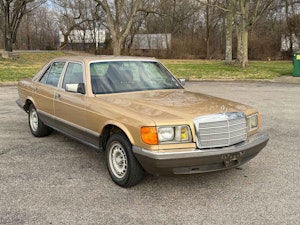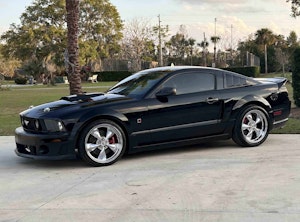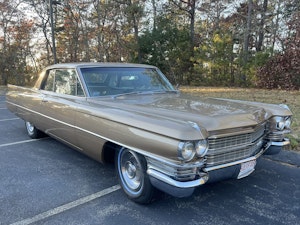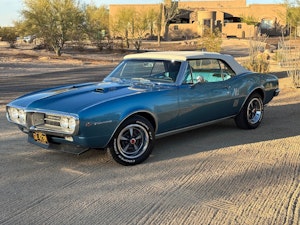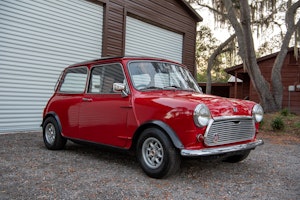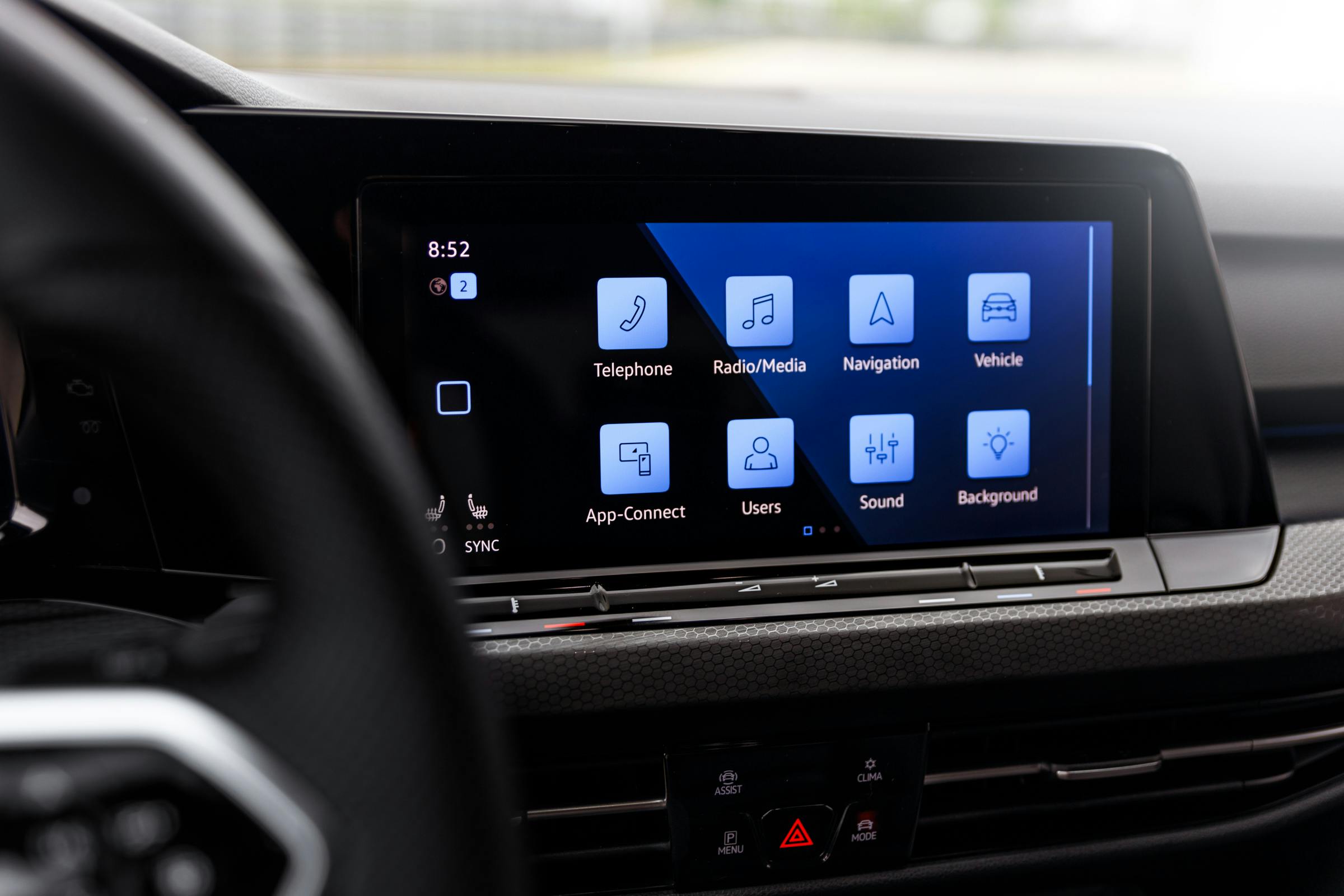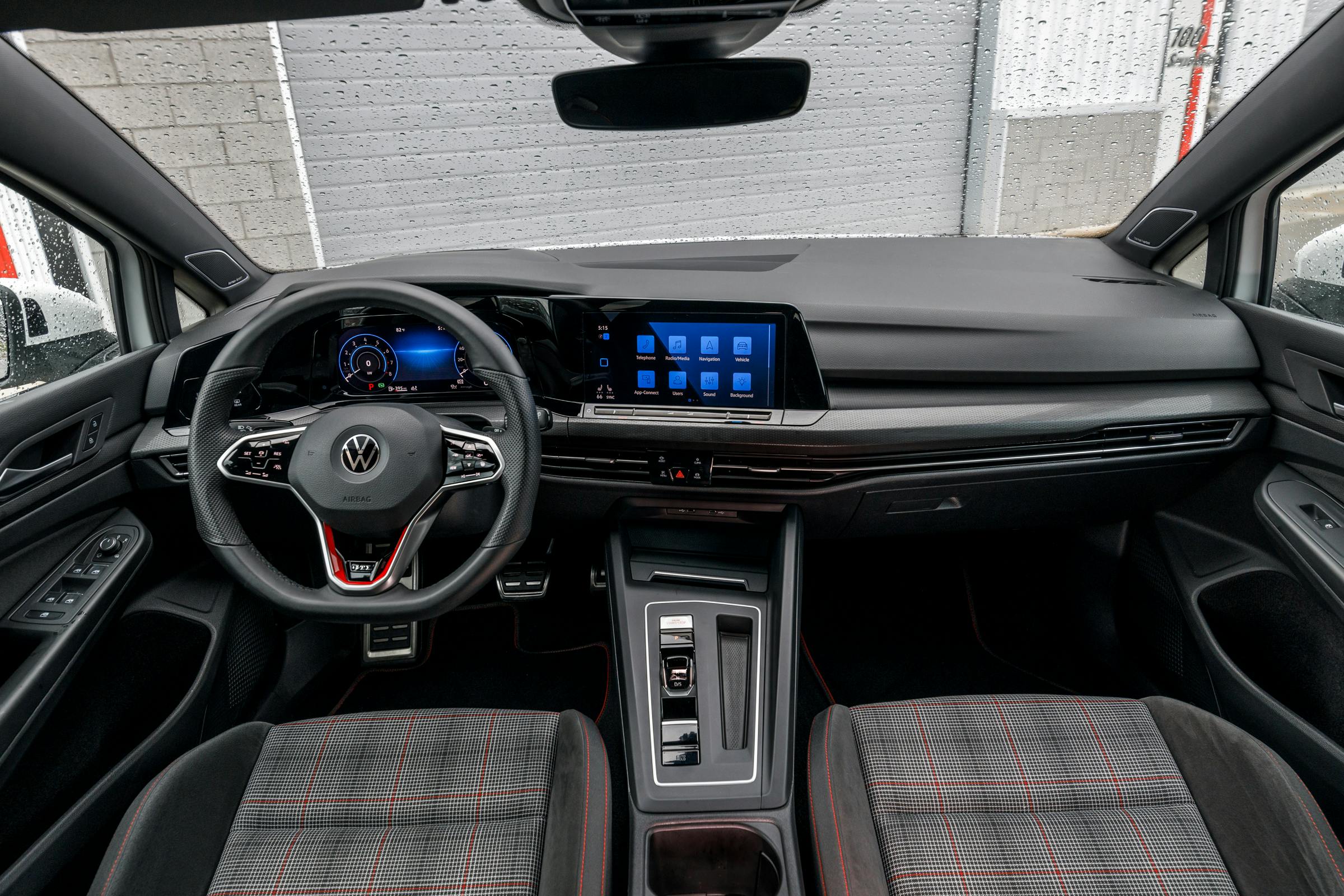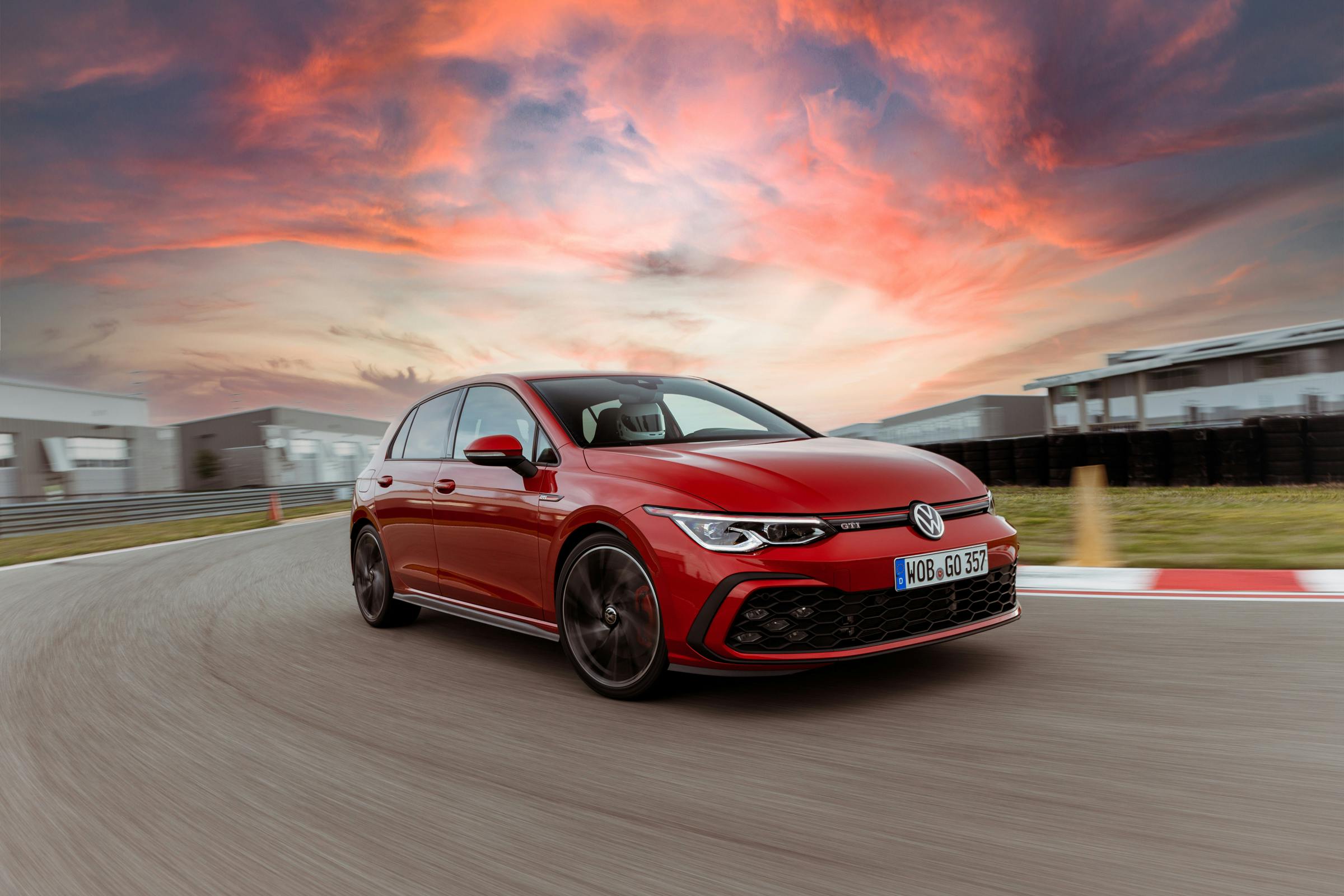Media | Articles
First Look Review: 2022 Volkswagen GTI
“The most beloved Volkswagen.”
A VW product planner actually said those words to journalists last week, in a garage at Detroit’s M1 Concourse. One of the ground rules of the car business is that manufacturer statements on emotion are generally hooey, but we were there to drive a GTI, so nobody snickered. That name has long been stuck on one of the world’s giggliest practical cars, a well-rounded corker with ants in its pants and acres of space at sensible price.
Full disclosure: I own one of these suckers. In late 2019, after years of testing GTIs for work, your narrator and his wife pulled the trigger and brought home a brand-new five-door. I’m attached. It’s over here, if you’re curious. Red and plaid and solid rad.
Attachment is the whole reason this car survives in America. As of January 2021, VW no longer builds a base Golf for the United States; the hot-rod GTI is all we get. Blame atrocious sales and remember that the GTI might be dead here for similar reasons if it wasn’t VW’s Miata, a widely loved core of the company soul. Volkswagen’s best-selling American model is currently the Atlas SUV, but an Atlas is a three-row bus with an Ivan Drago face, and nobody stays up nights adding pictures of one to a 162-page Vortex forum thread on wheels. (Thirty-two hundred posts at press time! Wait a bit, they’ll add more.)
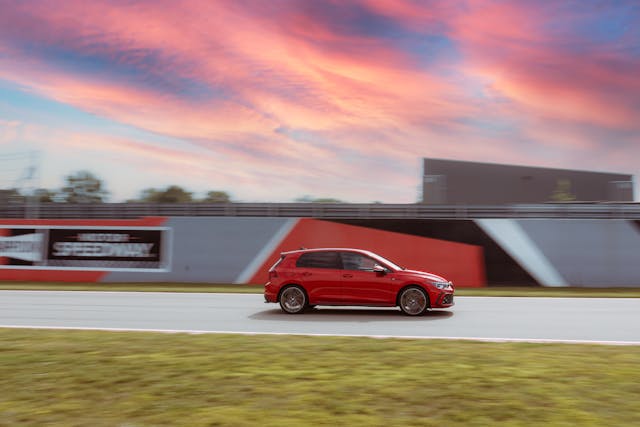
Only a dope would think the car unrelated. In VW-speak, the next Golf is called Golf VIII, or simply Mark 8. American dealers will see it later this year. The hot-rod model is still called Grand Touring Injection, and its front wheels are still driven by a turbo four, as they have been since gen five. The new Golf shares platform acronym with the old—MQB, for Modularer Querbaukasten, VW’s decade-old modular method for the engineering of transverse front-drivers. The original MQB parts bin supported dozens of Volkswagen and Audi models; the only universal thread was a set distance between firewall and front axle.
Marketplace
Buy and sell classics with confidence
Many of those cars were good. The 2015–2020 GTI in particular notched better American sales than any previous GTI. The new Golf uses what VW calls MQB Evo, a platform revision first seen in Europe in 2019. Wheelbase is up more than half an inch, and overall length has plumped by more than an inch. (The Golf 7, in turn, dwarfed Golfs 5 and 6—it was noticeably wider than those cars and more than two inches longer between the wheels.) The old engine carries over, albeit tweaked; it now makes 241 hp at 6500 rpm (up from 228) and 273 lb-ft at 1600 rpm (up from 258), thanks mostly to a few more pounds of boost. There is still a six-speed manual and an optional, virtually mind-reading seven-speed twin-clutch. The base car still offers plaid-cloth seats. Somewhere, Gunhild Liljequist smiles at her swatch book.
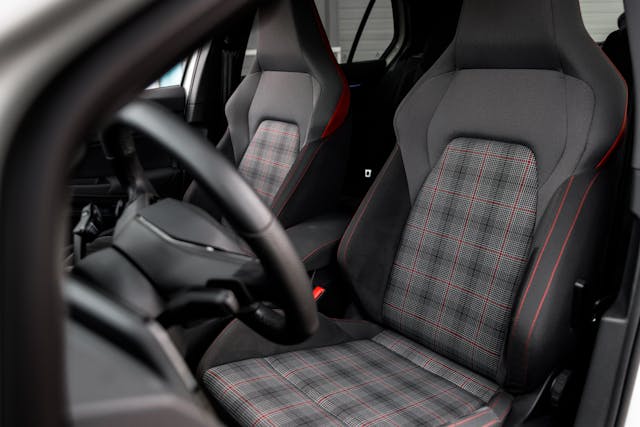
The chassis was poked at some, to feel the same but also different. Changes here were mostly attempts to help the car put power down and work better in a corner. Curb weight is reportedly unaltered, but spring rates have risen by 15 percent in the rear and five percent in the front. Dampers and a few bushings have been redesigned. Gone is the old steel front subframe, replaced by a stiffer and lighter aluminum piece. The adjustable chassis modes are now far more tweakable for driver preference in aggression and stiffness. Somewhere in the software-hardware marriage, VW says, the standard multi-plate limited-slip has been taught to work more effectively, helping curb understeer.

To meet all of this, we were offered a handful of unchaperoned sessions on M1’s short road course and autocross pad. The engine is still a smidge laggy under big throttle at low rpm, but it’s also slightly more linear in midrange and no less rippy up top. Mid-corner pivots under braking are the business; the diff does crazy work to help the car rotate on throttle—noticeably more than in the Mk. 7—and the wheel talks decently without torque steer or kickback. The GTI is still slightly too quick to zip through town at full leadfoot without arrest, but it’s also slow enough in a straight line that no lap feels manic. You either sling through corners with tidy hands and squinty racer-face thoughts about speed maintenance, or you’re slow and feel stupid.
As it should be, in a car like this.
One more chassis fact, perhaps the best of all: For the first time on an American-market GTI, electronic stability control can be disabled. Predictably, this move takes around three million menu swipes and taps on the new ten-inch console screen. It also means the GTI can once again play the name’s greatest hits: trailed-brake slides in corners (!) and lift-throttle slides (!!) when the back axle is up on its toes. Either way, the car simply sparks and fizzes through corners in a way its nannied ancestors couldn’t.
If you don’t think this is killer news, fine: Put this screen down and go back to eating your cold breakfast mush. May the joy of spicy flavor never enter your life.
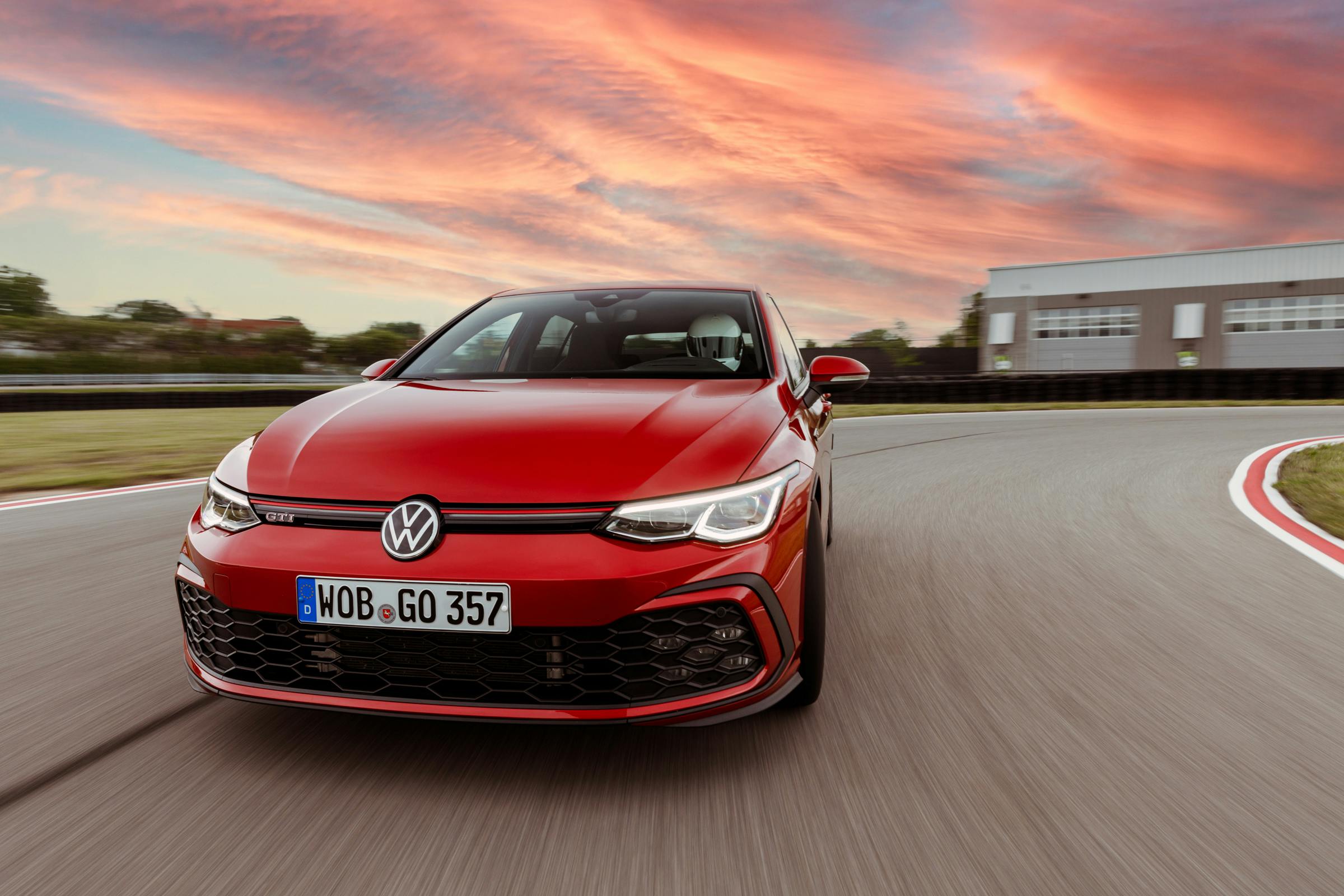
Inside, the center tunnel holds either that traditionally ropey Golf shifter or a tiny R-N-D/S nub-button, shorter than your thumb, for bossing the twin-clutch. The old analog instruments have been canned, replaced by a 10.3-inch screen. There’s also the aforementioned ten-incher in the middle of the dash, for all the jobs in a modern car that desperately require a large and central piece of smudgy glass. Real buttons and switches are conspicuously absent, which is fine if you never touch anything with your eyes on the road and only lightly annoying if you just want to up the fan speed without paging through unintuitive German menu hierarchies while yelling frustrated obscenities at your useless American sausage-fingers as they bonk the glass in the wrong place every time the car hits a bump.
Finally, the center console and dash are no longer aggressively angled toward the driver, as in the Golf 7. This gives the unpleasant illusion of cockpit roughly three miles wider than before, though it’s basically the same size.
Happily, the instrument cluster is clear and easy to read.
(Does all this sound cranky and old-mannish? Maybe. But simple focus is underrated.)
GTIs are supposed to haul people, sip fuel, and crank out laughs in equal parts. If the Golf 7 was larger and cushier than its ancestors but less crackly on a back road, the 8 is basically a Botoxed 7 with a screen fetish and a more acute case of the mid-corner hoots. The new boss is the old, just in a new shirt and juiced where it counts.
A VW dealer principal once told me that his sales guys loved GTI buyers, because those folks perpetually evangelized new customers out of friends and family. Your narrator is no exception. He is also of two minds. As a journalist, he suspects that faddish dash will be impractical and annoying to live with. Any good industry student knows that a tidy little dancing shoe shouldn’t grow ever larger. That front bumper looks like stoned bug face.
As a GTI owner, your author agrees with this dude, but he also remembers how frustrating it can be to search for a new small family car. Especially on a budget, especially if you like driving. Honda ballooned the once-tidy Civic into a plasticky yacht; Hyundai’s best work is hilarious and special but also too cramped for kid seats; Ford has given up on everything but truck shapes and Mustangs. (R.I.P., Fiesta ST and Focus ST/RS). Clutch pedals are currently an endangered species, along with styling restraint and steering feel that won’t put you to sleep.
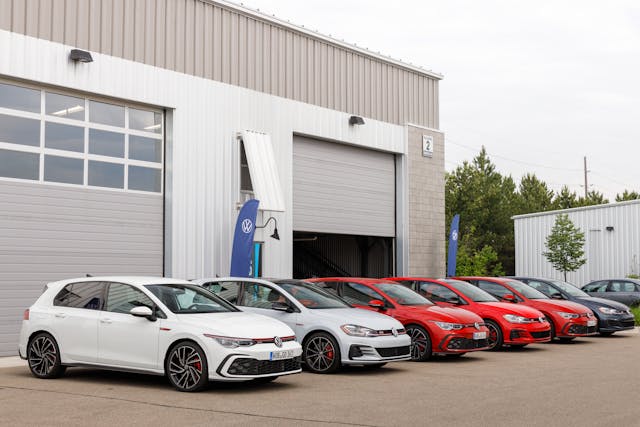
A duality in one head. And one car. At first glance, the GTI seems a compromised evolution of a great idea, but also a sparkling corner weapon whose market persistence is hold-out from a more civilized age. A good old notion somehow still living when crossover blobs rule sales books and simple fun doesn’t sell.
It could be better, sure. But new cars are like horseshoes and hand grenades, where close counts for a lot.
That M1 track event didn’t offer enough mileage for a full review. A deeper dive will run here soon. In the meantime, you can decide for yourself which of my inner voices takes priority. I’m biased, of course, but I suspect they’re each 100-percent right.
***
2022 Volkswagen Golf GTI
Base price: $29,000 (est., European models tested)
Highs: Great chassis. Spacious cabin. Both comfy and sharp, and you can still get a manual. Not the quickest hatch on our shores, but easily the Swiss Army knife of the bunch.
Lows: Divisive looks and cabin layout. Interior can frustrate. Slightly larger than the last one, if you’re picking nits.
Summary: The gold standard for cars like this, imperfect in detail but improved where it counts.



